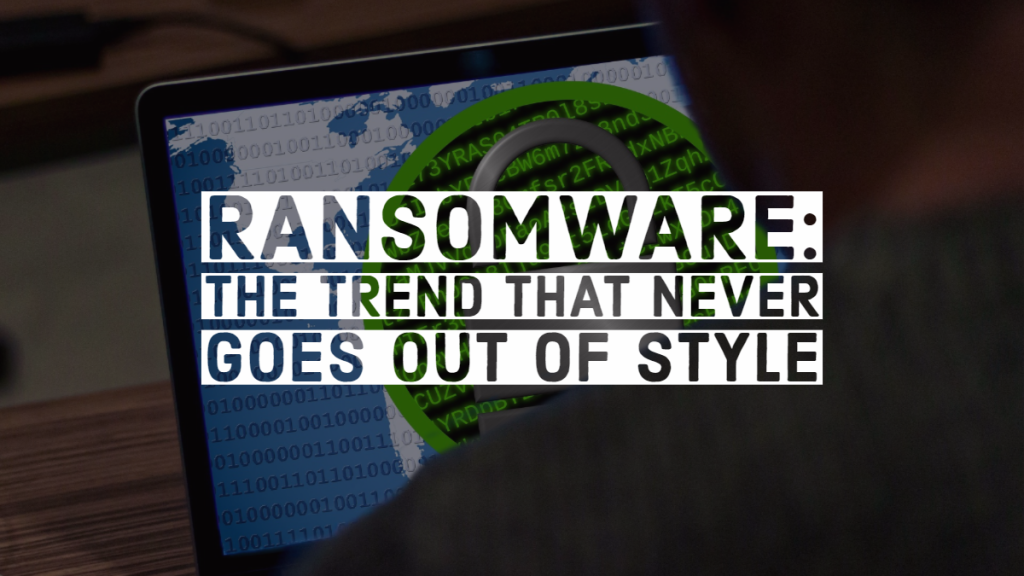
Ransomware is not a new type of cyber-attack. In fact, it’s been around for years, but don’t let its age fool you; ransomware is not “yesterday’s news”. Ransomware is just as alive as ever before, continuing to dominate industries across the globe, and healthcare is not immune from its threat.
You may be familiar with some of the more prominent ransomware attacks that made headlines over the last few years. Perhaps you’ve heard of Petya, a form of malware that affected thousands of computers across the globe in 2016 and 2017. Then there was WannaCry ransomware, the infamous ransomware that took the world by storm in 2017. Let’s take a closer look at the WannaCry outbreak that caused chaos and damage for many organizations.
The WannaCry Epidemic
WannaCry struck many organizations worldwide but perhaps gained its notoriety by striking several significant, high-profile systems, like Britain’s National Health Service and the United Kingdom’s National Health Service (NHS). WannaCry showed just how dangerous (and inconvenient) ransomware can be. Hospitals had to cancel operations and appointments, relocate patients, revert to pen and paper, and more.
Some businesses were hit harder than others by the attacks, like Erie County Medical Center who lost access to 6,000 computers, forcing them to do their processes manually. Recovery costs for the medical center reached $10 million.
Could It Have Been Prevented?
Microsoft actually released a patch needed to prevent WannaCry infections BEFORE the attacks began. Unfortunately, despite the patch being deemed “critical”, many systems were not patched, leaving them vulnerable when WannaCry began sweeping the globe. Infected systems left their organizations with two choices: pay the ransom (and potentially still not regain access to your data) or restore your files from a backup.
This serves as a very important reminder of two things:
- ALWAYS ensure your systems are patched and kept up to date
- Backup your files routinely
Ransomware Today
Fast forward to 2018-2019 – ransomware is still alive and doing quite well. You may have heard of GandCrab, which began surfacing in 2018. We’ve also seen LockerGoga, a form of ransomware that began surfacing early this year and is likely responsible for an attack on Norwegian aluminum manufacturing giant Norsk Hydro. And, in recent news, Robbinhood, a fairly new variant of ransomware has shown what damage it can cause, crippling the city of Greenville, North Carolina last month (April), and striking Baltimore city earlier this month.
Despite what variant of ransomware we’re seeing at any given time of any given year, one thing remains the same – it can destroy your system, your data, your reputation, and can even close down your organization.
Protecting and Preparing Your Organization
Healthcare organizations must remain diligent in implementing and enforcing security measures to protect against cybercrime. The worst mistake you can make is to assume you are not a target for cybercriminals – everyone is a target, from small businesses to large corporations. If you access or store data, you have what hackers want.
Train your employees. First and foremost, your employees must be trained on security awareness. Not only should they know how to spot and prevent malicious attempts by cybercriminals, they should also know how to respond if they suspect a data breach or inadvertently cause a security incident.
Ensure your networks are properly segmented. If your organization would suffer an attack, having segmented networks would make it much more difficult for the ransomware to spread across systems.
Patch your applications and operating systems. If there is a known vulnerability, it is critical that you patch it as quickly as possible. Looking back at WannaCry for example, had more organizations patched that vulnerability it could have yielded a much different outcome.
Frequently backup your files. Having data backups is critical, for both data recovery and HIPAA compliance. If your system is hit by ransomware, backups would provide you with access to your data prior to the intrusion. Make sure that your files are backed up at an offsite location or in the cloud that way if your organization is struck by a security incident or disaster, your backups won’t go down with the rest of your systems. You should also test your backups regularly to ensure they are not corrupted.
Have a disaster recovery and an incident response plan. Your organization and your employees must know how to respond when a disaster or suspected security incident strikes. Have these plans well documented but remember, not every incident will be handled the same. The type of incident and the magnitude of that incident will dictate how you respond.
Cyber insurance is a must-have for every organization. Despite all preventative efforts, breaches happen, and when they do the costs add up – quickly. HIPAA fines, legal counsel, breach notification, and credit monitoring are just some of the expenses you could incur after an incident. Cyber insurance can help protect you from losses related to data breaches or security incidents.
While we’ve seen several ransomware variants come and go and the chatter may seem to have silenced, don’t for one second be fooled into thinking ransomware is dead. When patches are issued for vulnerabilities and decryption tools are created for regaining access to encrypted files, cybercriminals don’t just give up. Attackers are sophisticated and will continue to advance their tactics and come out with new strains of ransomware. Be prepared for a cyber attack at any given moment because you never know when one may find its way into your organization.

Leave a Reply